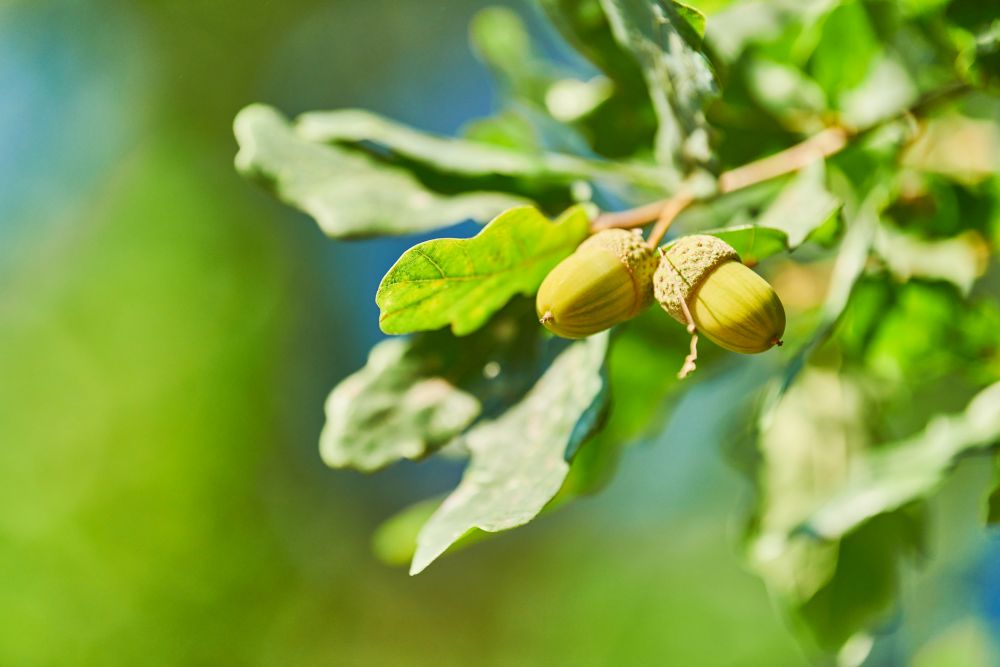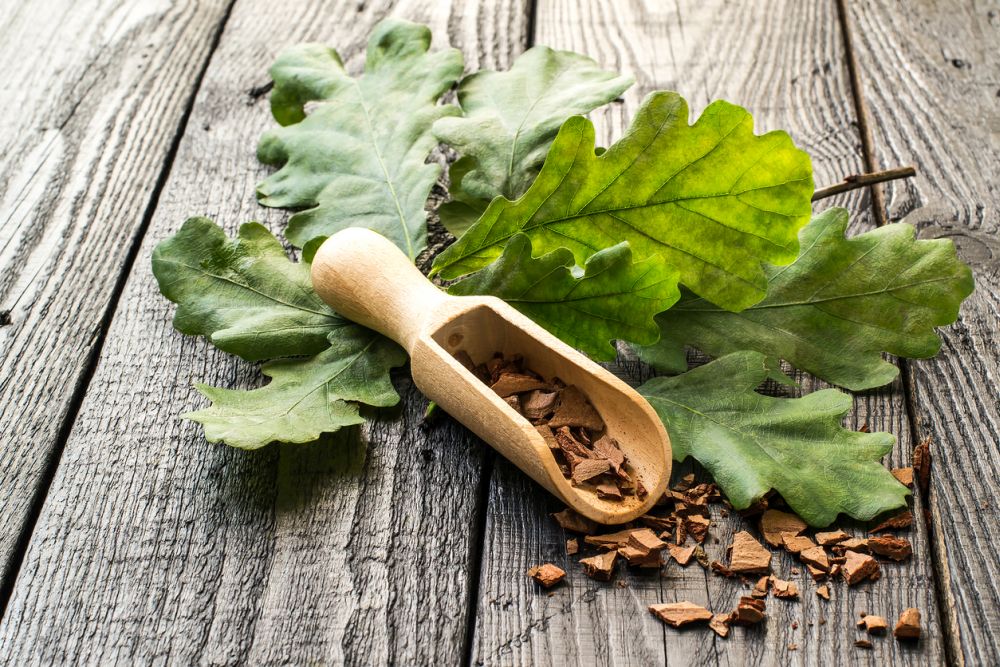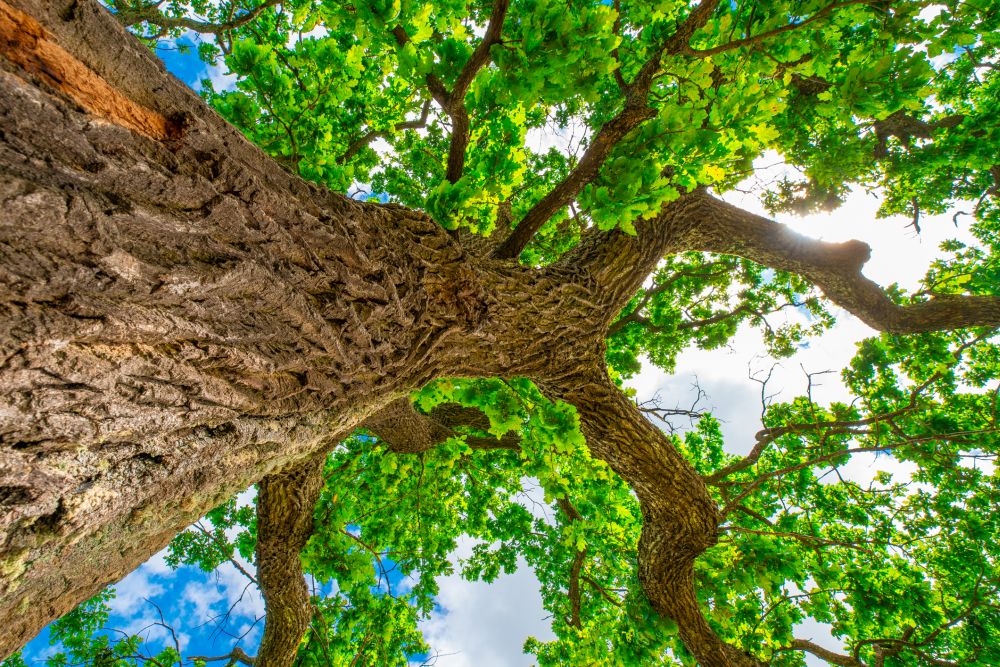Oak Tree Care – How To Grow And Care For Oak Trees
The mighty oak tree is a legend in its own right. Ever since early humans learned to identify and use the vegetation around them, the oak tree has always had a special place in their culture. The Druids in the UK used oak branches as part of their burial rituals to give the dead strength to make it to the next life. Centuries later, French winemakers are still using oak barrels to ferment the best wine money can buy.
Large and sprawling oak trees need a lot of space to grow. So they wouldn’t be your first choice if you have a small garden or you’re looking for a tree to throw some shade in your backyard. But if you have a large lawn or want to establish a landmark in your property, you couldn’t come up with a better landscaping option than the oak tree.
Oak Tree at a Glance
With over 450 species, oak trees (Quercus robur) spread far and wide across the globe. Some of those species are threatened due to land development projects. The oak is a deciduous hardwood tree whose leaves turn golden in the fall before the tree goes dormant in the winter, shedding all its leaves until the next spring.
Known for its long life, the average oak could live up to 400 years, outliving those who planted it. On average, the mature tree will reach 100 feet or even more in the right conditions. But it will take the tree up to 20 years to reach that height since oaks have one of the slowest growth rates among trees.
The tree’s bark is smooth and greenish in the early years, but as the tree ages, it turns dark brown as deep grooves cover it. And depending on the type of oak you have, the leaves vary wildly in shape and color. Leaves of red oaks are lobed, pointed, and covered with bristles near the top. As for white oak trees, their leaves are usually round-tipped and smooth.
The fruits of oak trees are called acorns. While white oak acorns have a pleasant taste with a trailing tang, red oak acorns are unpalatable and bitter.
Benefits of Oak Trees
Besides providing shade and edible acorns, oak trees have always played a role in the lives of people who lived next door to an oak forest. Many of those traditional uses of oak trees have disappeared along with the cultures that promoted them. But others are still very much alive to this day.
- Oak wood is hard and dense with high resistance to termites and fungi, making it ideal for planking, furniture, and roof and garden constructions.
- Distilleries have favored oak barrels to store and age spirits from whiskey to sherry wine thanks to the nuanced flavors, colors, and aromas it adds to the liquor.
- If you want to smoke fish, cheese, or meat, you should burn oak wood for the best results.
- Musical instruments such as drums use mainly oak wood because it provides a deep resonance and louder tones.
- The oak tree’s bark has been the main source of cork, tannin used for tanning leather, and an important ingredient in traditional medicine.
Oak Tree Varieties
While oaks fall under red oak and white oak categories, each of these has hundreds of varieties. Not all of those varieties are suitable to grow in the yard or garden. Here are some of the most popular oak varieties to consider.
- Water Oak Tree (Quercus nigra): This variety is popular not just because it towers over 100 feet but also because it retains its leaves well into the middle of winter. The leaves are dark green, spoon-shaped, and have round tips. The mature tree often has scaly bark that turns almost black.
- Cherrybark Oak (Quercus pagoda): With bark resembling that of the black cherry tree, this variety grows to 130 feet high and has an exceptionally fast growth rate compared to other oaks. The glossy leaves are dark green with fine hairs on the underside. They’re mostly lobed but lack the bristles common to these types of oaks.
- Northern Red Oak (Quercus rubra): A popular oak in North America, the bright green leaves are lobed with jagged teeth near the tip. The tree averages 90 feet when fully mature. Its bark is usually dark brown with gray stripes running through the deep fissures.
- Scarlet Oak (Quercus coccinea): Averaging around 65 feet tall, this is a medium-size tree that you can grow in your yard. The leaves are dark green with C-shapes defining the lobes. As for the bark, it’s usually dark gray with brownish streaks.
How to Grow an Oak Tree
To grow the mighty oak tree, you’ll have to start it from seeds. Since the tree takes years to mature anyway, a few more months spent treating and germinating the acorns won’t make much difference. Here’s how to start your oak tree from an acorn in easy steps.
- Harvest your ripe acorns in the fall. Select an acorn that is healthy, free from fungus and dents.
- Remove the caps off the acorns and place them in a bucket full of water. Discard the acorns that float since they won’t germinate.
- Place the rest of the acorns in a plastic bag. Fill the bag with a moist potting mix such as peat mix or vermiculite. Seal the bag and keep it in the fridge.
- Check the acorns regularly and add a few drops of water if the potting mix dries out.
- After about 8 weeks, the acorns will germinate. Germination might take longer depending on the acorns.
- Select a medium-size container with drainage holes at the bottom and fill it with a potting mix, then plant the acorn in it.
- Water the pots thoroughly, then place them on a window sill facing the south. The acorns need plenty of sunlight to sprout.
- When the seedlings are about 6 inches tall with a couple of leaves growing at the top, you need to harden them. Move them outdoors in the early spring for a few hours every day.
- Pick a spot in your lawn or garden to provide a permanent place for the oak tree. That spot should get plenty of sunlight, has enough space to accommodate the fully grown oak, and is away from walls and sidewalks.
- Remove debris and other vegetation in that area and turn up the top 10 inches of the soil. Let it rest under the sun for a few days.
- Dig a hole as deep as the oak sapling taproot and twice as wide as the root ball.
- Ease the oak out of the pot and inspect the root system. Straighten out any tangled roots.
- Place the oak sapling in the hole and fill soil around it. Pack the soil firmly to make sure the sapling is standing upright on its own.
- Water the oak immediately and cover the soil with a thick layer of mulching to improve water retention.
Oak Tree Care
The young oak tree is a food source for many wildlife. So if you have deer or rabbits roaming the area, you might want to place a protective fence around the oak sapling until it gains some height and girth.
Soil
Soil doesn’t just provide the oak tree with the nutrients and moisture necessary for its survival. It also protects its notoriously wandering roots. Loamy and sandy soil is ideal for the oak root system to grow and penetrate. However, the hardy oak can also grow in clay and dense soil. As long as you keep the soil loose and don’t use heavy machinery near the tree that would compact the soil. Keep an eye on the area near the tree base. If you see roots rising, cover them with a thick layer of soil to protect them. Avoid covering the bark and always allow a few inches from the base to prevent bark rot.
Watering
While transplanting the young oak sapling, you must have noticed the prominent taproot growing out of the rootball. This taproot will keep penetrating the layers of soil deeper and deeper in search of moisture and nutrients. That’s good news for you since it means you won’t have to water the oak tree that often. Experts recommend you only irrigate the tree about once a month, even in the summer. When the tree goes dormant in the winter, you can cut back watering to about once every two months. Extra water doesn’t benefit the tree and might become fertile grounds for grubs and fungi to grow and harm the tree.
Fertilizing
Don’t let the oak tree’s slow growth rate fool you. The tree needs as much fertilizer as any other tree, especially in the first few years of its life. Even if the young tree only grows a few inches a year, its root system is still developing and spreading out at a fast pace. So feed your oak early on to give it a good start and protect it against diseases. Slow-release aged manure and organic compost will feed the tree for weeks after each application. You can also use a balanced fertilizer with a 10-10-10 formula to help an infected oak regain health. If you happen to disturb the soil near the roots of the oak for any reason, you’ll need to apply fertilizer to replenish the lost nutrients.
Pests and Diseases
While the oak tree is still growing, it becomes vulnerable to attacks from pests of different types. Most common symptoms include discoloration of leaves, dead branches, thin canopy, white coating, or wet patches covering the trunk. The most likely culprits for these ailments could be caterpillars, lace bugs, leaf miners, scales, aphids, or galls.
The young tree could also be suffering from fungus, root rot, leaf blister, anthracnose, root rot, or powdery mildew, among other diseases. Some of these diseases could be lethal to the young oak, so it’s recommended you get a certified arborist to examine the tree.


